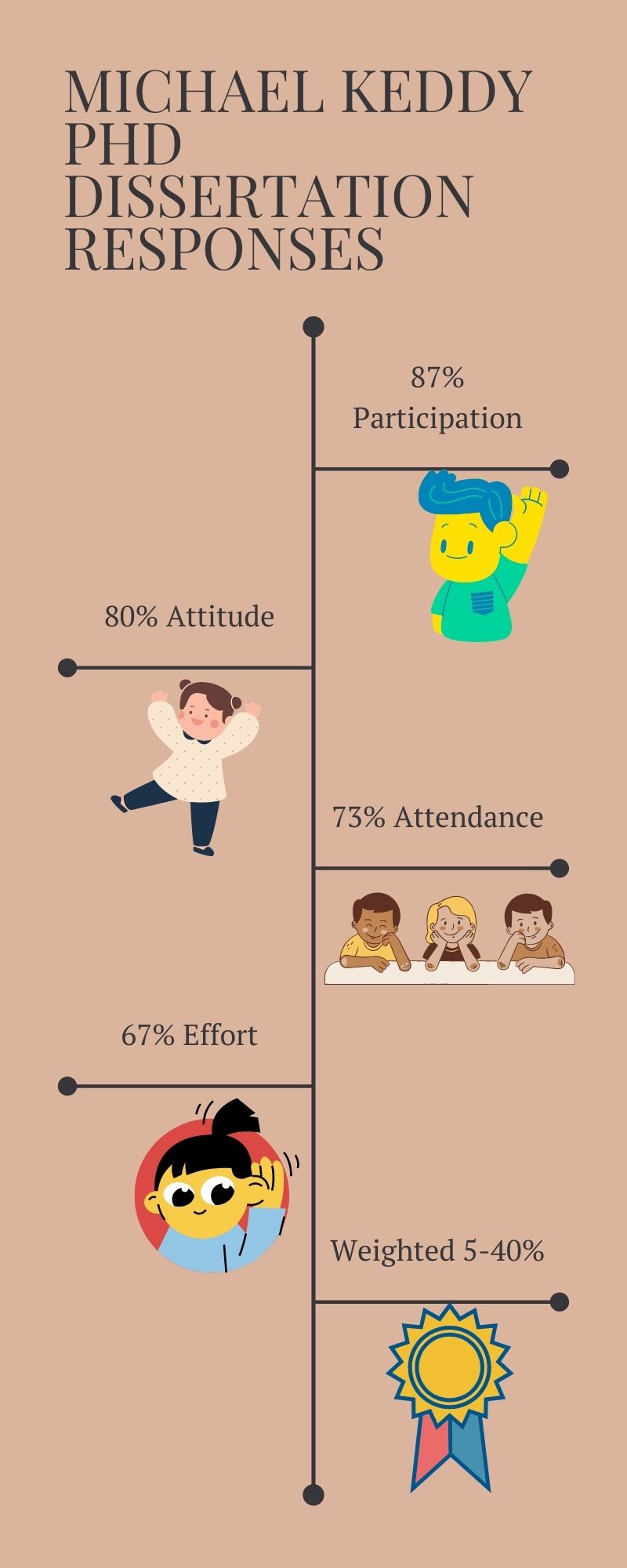As I’ve had a couple of classes at this point in my student career with Michael Keddy, reading his PhD dissertation Assessment in the secondary school band programs of British Columbia was not altogether new information to me. We’ve had in class discussions surrounding some of his findings in this dissertation, but my real interest in looking at this document was in seeing the responses that he received from the teachers surveyed. Because of this, and time constraints, I focused my reading on pages 98-140 of the dissertation.
In a pretty succinct little infographic here I’ve put together the results that I wanted to discuss in this blog post.

Something that really stuck out to me about this was that these are non-achievement factors that are being graded, and while I may be influenced by having had Dr. Keddy as a professor, it rubs me the wrong way to place the weight of almost half of the class on something that is a non-achievement factor. To boot, I find it problematic to grade on something like attitude or effort. We’ve discussed this a lot in classes previously, but everyone’s engaged looks so different, and what may seem disengaged to one person could be fully engaged for the student. While it can sort of be standardized in instrumental classes, I think these non-achievement factors can really be evidenced in other forms of assessment. Performance assessment, for example, can prove whether or not a student was attending, participating, and engaged during class time, or outside of class time. If anything, I would use this as formative assessment, because it really should not be counting towards a students’ final grade. It seems counterintuitive to do all this work into assessment only to assess a student on whether they are in class.
Part of this could be due to one of the commonalities found in among the respondents. Many of them reported that they did not have much pedagogical knowledge of assessment going into teaching, and so they may have picked up on what their predecessor was doing or simply done what others around them were doing.
Leave a Reply
You must be logged in to post a comment.